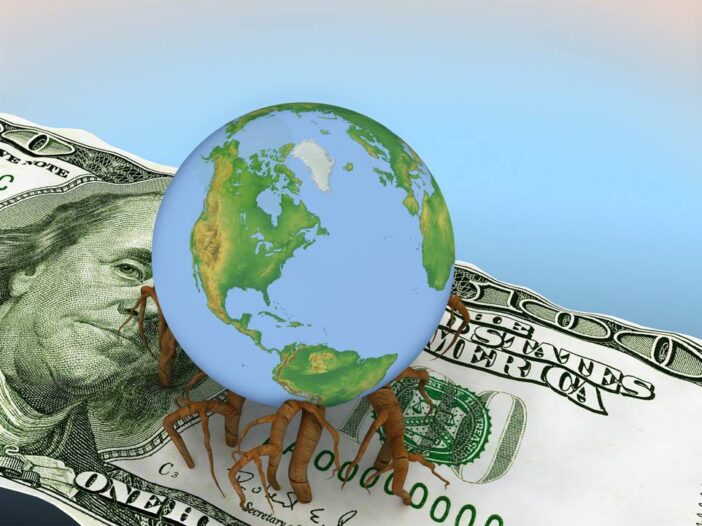Hopefully you’re already familiar with SDRs; I’ve written about them many times. SDR stands for special drawing right. It sounds like a geeky name and it is. That’s by design. SDRs are issued by the International Monetary Fund. They are really world money, but the IMF likes to keep things complicated so that everyday observers can’t figure out what it’s doing.
The Federal Reserve has a printing press it uses to print dollars. The European Central Bank has a printing press it uses to print euros. And the IMF has a printing press it uses to print world money (aka SDRs).
There’s nothing new about SDRs. They were invented in 1969 and issued on several occasions between 1970 and 1980. Then no SDRs were issued until 2009. At that time, a new issue was distributed to help add liquidity in the aftermath of the 2008 global financial crisis. There’s not much evidence that the SDRs did any good because the issue was not that large, and it was done a full year after the most acute phase of the crisis in September 2008 when Lehman Brothers went bankrupt.
A new issue of SDRs
Now, we have another financial crisis and the IMF is back with a new issue of SDRs. This time the issue is much larger. It consists of SDR650 billion, which is about US$923 billion at current exchange rates (SDR1 = US$1.42). SDRs are not issued predominately to the neediest nations. They are issued to all 190 IMF member nations in proportion to their capital accounts. The large developed economies such as the US have the largest IMF capital accounts, so they get the most SDRs (the US will get about SDR105 billion, equal to about US$150 billion).
But that’s not the end of the process. The US and other nations can lend their SDRs back to the IMF, which can then lend them to poorer nations. Those poor nations can easily convert their SDRs into dollars or euros using separate facilities inside the IMF. So, the liquidity can get where it needs to go through some back-to-back and swap arrangements.
How to Survive Australia’s Biggest Recession in 90 Years. Download your free report and learn more.
More SDRs are coming
This article describes parts of this process. It is also a good primer on some of the history and ins and outs of the SDR allocation process. This new issue of world money is significant and will have some beneficial impact in terms of global liquidity and countering a global dollar shortage.
Still, it is best understood as a stalking horse for even more SDRs coming in the near future. Some in the US Congress want to see SDR allocations of US$2.5 trillion or more. These members are the globalists who want to diminish the role of the US in world affairs and promote a borderless world financed with world money. More SDRs are coming. And every new issue of SDRs is one more nail in the coffin of the US dollar’s role as the leading global reserve currency.
And speaking of the US…
More signs that the economic recovery is running out of steam
Don’t buy into the happy talk that all is well with the US economy. It’s true that the unemployment rate has dropped. But as reported in this article, initial claims for unemployment are on the rise again. That’s a trend that will show up as weaker job creation in the months ahead.
The headline declining unemployment rate ignores over 10 million able-bodied Americans between the ages of 25 and 54 who do not have jobs but are not counted as unemployed because they haven’t looked for a job recently. If you’re a waitress, why look for a job if half the restaurants in town are closed or out of business? The key metrics that tell you how the economy is doing are the labour force participation rate, real wage increases, and initial claims for unemployment. All three point to slower growth and a recovery that is running out of steam.
Some claim the cure is more government spending
Biden may or may not understand Modern Monetary Theory, but it doesn’t matter. The point is, it’s here. MMT is now the law of the land in the form of extreme deficit spending such as the multitrillion-dollar ‘COVID Relief’ legislation. There’s a complete disregard for the size of the deficit or whether spending is paid for with taxes.
The resulting unprecedented growth in the debt-to-GDP ratio has now put the US in the same super-debtor league as Lebanon, Greece, and Italy. Bernie Sanders is chair of the Senate Budget Committee and his muse is Professor Stephanie Kelton, the bright light of MMT advocates. Members of Congress have always been addicted to spending, but now they have intellectual air cover in the form of the callow analytics of MMT.
At this stage of the process, there is no stimulus or real growth — just more debt. The slow recovery will slow further, and the debt will remain. That’s what rising initial claims for unemployment benefits are telling us.
Regards,
 |
Jim Rickards,
Strategist, The Daily Reckoning Australia
PS: This content was originally published by Strategic Intelligence Australia, a financial advisory newsletter designed to help you protect your wealth and potentially profit from unseen world events. Learn more here.

